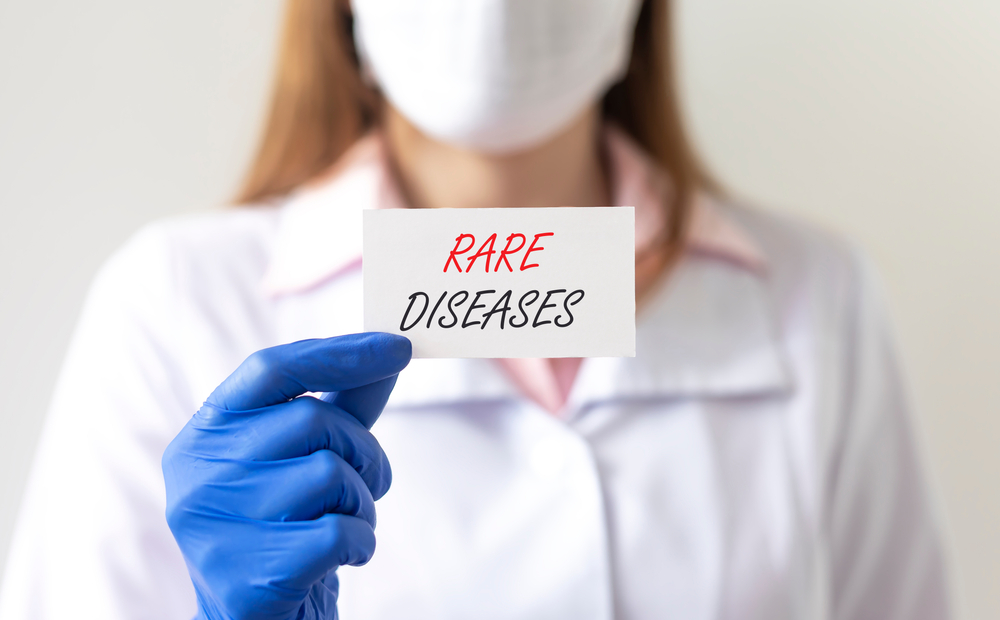
A rare disease is a debilitating lifelong disease or disorder that occurs infrequently in the human population. Examples include diseases in India like Haemophilia, Thalassemia, Sickle-cell Anaemia, Cystic Fibrosis, and others. While the WHO defines rare disease as one with a prevalence of 1 or less, per 1000 population, different countries coin their own definitions according to their respective disease prevalence, severity, and availability of treatment options. Rare disease research is accompanied by a unique set of challenges. New rare diseases (sometimes termed ‘orphan drugs’) and conditions are identified and reported regularly in the medical literature. However, since the patient pool is very small, there is often a lack of epidemiological data available, making research both difficult and costly. Further, as rare diseases do not constitute a significant market share, therapies are often not available or are prohibitively expensive. In India, there are between 7000 - 8000 rare diseases, but less than 5% have therapies available to treat them. Taken as a whole, rare diseases affect nearly 1/5th of India.
India is seeing an increased focus on developing therapies for rare diseases. The country has particularly high rare disease burden, driven by its population size, and has an estimated that 96 million people in India are living with a rare disease, facing limited or non-existent access to treatment. This growing need for therapies has been widely called for, and now been met with the release of India’s first National Policy on Rare Diseases 2021 on 30th March 2021, which lays out India’s approach to prevention and management of rare diseases. The policy aims to lower the high cost of treatment for rare diseases and boost indigenous research, as well as envisage the creation of a national hospital based registry of rare diseases so that sufficient epidemiological data is available to both define and conduct the requisite R&D on rare diseases. The policy also focuses on creation of Nidan Kendras for early screening and prevention, as well as plans to strengthen extant secondary and tertiary health facilities at Centres of Excellence.
Further, rare disease therapies are also supported by the recently released Production Linked Incentive Scheme 2.0 for Pharmaceuticals, with an outlay of INR 15000 Crore (~$ 2 Bn). This is a welcome sign for Indian drug manufacturers as the government is now providing financial stimulus to orphan drugs development under Category 1 of pharmaceutical goods in the Production Linked Incentive (PLI) Scheme. The central drugs regulator, CDSCO, has also made provisions for fast-track processing of applications for rare diseases drugs under New Drugs and Clinical Trials Rules, 2019 for drug trials and experimental therapies and have exempted the application fee of potential drug candidates.
India is also well-positioned to offer an abundance of opportunities with respect to diagnostics for rare diseases. Reducing the burden of rare and genetic diseases depends largely on making drug discovery and vaccine development a priority of the public health programme. A handful of commercial companies in India are already offering genetic testing for rare genetic diseases, thus, aiding the rare disease diagnosis requirements. With regards to furthering research, the Genomics for Understanding Rare Diseases: India Alliance Network (GUaRDIAN), a non-profit clinical genomics research network, has established a network of over 280 clinicians and scientists based at over 60 major medical and research centres, forming one of the largest clinical genomics research networks in India. Further, Council of Scientific & Industrial Research (CSIR), a publicly funded research institution, has also established an Indian Genetic Disease Database (IGDD) at the Indian Institute of Chemical Biology. This database keeps track of mutations in the causal genes for genetic diseases common in India and provides valuable insights to physicians and researchers.
India can also leverage its robust skilled resource pool in both IT and science creating an attractive location for research and development of new technologies and therapeutics for orphan drugs. Advances in genomics as well as more mainstream use of gene therapy have enabled us to target these diseases in a way that would not have been possible some years ago. India has the largest market share in the global services sourcing industry, as well as the third largest tech start-up hub globally, providing an ideal skill-base required for utilizing information technology towards rare disease therapy development.
Moreover, India’s population size of 1.3 billion people of 4500 ethnic groups provides a rich and diverse genetic pool, opening up opportunities for a new era of genomic research.
In conclusion, while traditionally neglected by the pharmaceutical industry, rare diseases and orphan drugs are rapidly becoming mainstream, and steadily gathering momentum in India. It is demanding wider partnership and participation of private sector for noble causes that have hitherto remained unexplored. The need for engagement is largely generated by resource constraint and competing health priorities, to those suffering from rare diseases in the country. As more companies move into the rare disease space, an increase in the number of disease-targeting treatments is expected.
This article has been authored by the Pharma team at Invest India.
- https://main.mohfw.gov.in/sites/default/files/Final%20NPRD%2C%202021.pdf
- https://main.mohfw.gov.in/sites/default/files/Rare%20Diseases%20Policy%20FINAL.pdf
- https://pib.gov.in/PressReleasePage.aspx?PRID=1700433
- https://humgenomics.biomedcentral.com/articles/10.1186/s40246-019-0215-5
- https://www.ncbi.nlm.nih.gov/pmc/articles/PMC6187403/
- https://pib.gov.in/PressReleseDetailm.aspx?PRID=1727936


